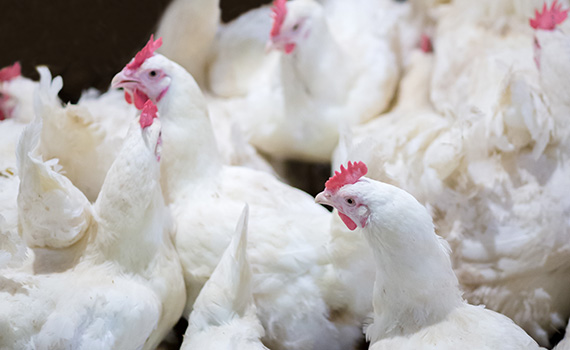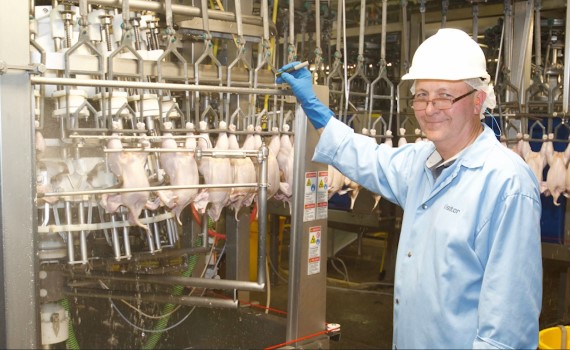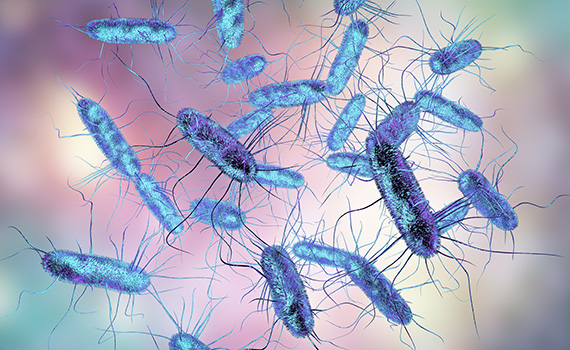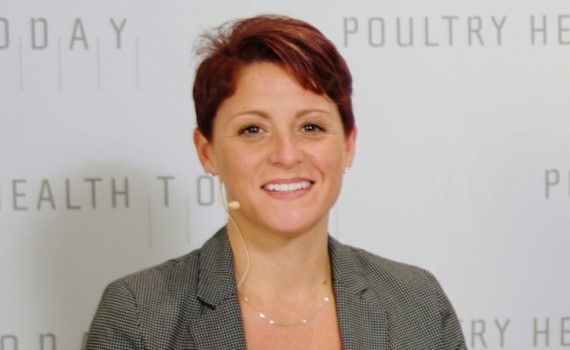New avian leukosis rule expected to reduce waste, improve efficiency for processing plants and FSIS
Acceptance of a petition designating avian leukosis lesions on poultry carcasses as a trimmable condition is expected to reduce waste and improve efficiency at processing plants while allowing meat inspectors to focus more on food safety, said Ashley Peterson, senior vice president, scientific and regulatory affairs for the National Chicken Council (NCC).
USDA Food Safety and Inspection Service (FSIS) recently granted the petition by NCC, which requested the agency amend its regulations.
“The existing regulations require that any lesion in a leukosis check results in the whole carcass ⸺ that’s the carcass and the viscera ⸺ being disposed of and not going into the food supply,” Peterson told Poultry Health Today.
“What we have asked for, and what we believe the agency is going to do moving forward, is that if a lesion [is] found, it is trimmable to that particular part only,” she added.
For example, if a lesion is found on the liver, the liver is trimmed and condemned, but the rest of the carcass is now considered safe and salable.
“USDA-FSIS has been very clear that leukosis does not cause an issue in humans,” Peterson said. “In addition, any lesions that are present on the bird…, are still going to be trimmed and will not go into the food supply.”
Other changes in the rule
Another request in the petition was for FSIS to remove provisions related to checking the first 300 birds from an incoming flock for avian leukosis in all poultry slaughter establishments operating under the New Poultry Inspection System. Previously, plants had to notify FSIS, and then FSIS had to inspect the carcass and viscera of the first 300 birds.
The USDA inspectors were taking time at the beginning of every flock change to inspect birds and look at the viscera associated with the carcass. With the new rule, they won’t have to do that, and their time can be spent elsewhere looking at true food-safety issues, Peterson said.
“Now the plant does not have to notify FSIS every time a new flock comes in, and FSIS doesn’t have to change what they’re doing,” she added.
History is important
Peterson noted that avian leukosis was not well understood in the 1950s when USDA started condemning whole carcasses that showed isolated lesions associated with the disease. Since then, the development and widespread use of Marek’s disease vaccines have all but eliminated leukosis from most poultry carcasses.
“As the use of Marek’s vaccine has evolved and become widespread throughout the industry, the incident rate of leukosis lesions, which are usually found on the viscera, has gone to almost none,” she added. “The regulation was promulgated back in 1950, and here we are in 2020. It’s nice to take a fresh look at the regulation and say, ‘How have things changed, and how can we do things better and be more efficient?’
“Now we can [test] specific tissues that may be impacted with those lesions and [trim] those, as opposed to condemning the whole bird,” she added.
If there are lesions for leukosis, they typically appear as either a small white spot on the liver or on other tissues such as the spleen or feather follicles. If any lesions are found on the carcass or on the giblets, the carcasses will still be condemned and will not go into the food supply, she added.
Next steps
While USDA-FSIS has granted the NCC petition, the rule still needs to be changed, Peterson said.
“They still have to go through rule-making, so FSIS will issue a proposed rule,” she said. “There will be a comment period, then FSIS will issue a final rule.”
Peterson thanked the industry for helping the NCC develop the petition and said it was a team effort.
“We had all of our integrators involved in developing this petition, which we submitted to the agency early in 2019, so a huge thank you to all of our industry partners for help making this a success,” she said.
“It’s always a good idea for us to take a step back and see how science and data can help support changes we want to make from a regulatory perspective,” Peterson said. “And that’s exactly what this petition did. It outlined the science and data that supported a regulatory change. Fortunately, USDA agreed with us, so we will be moving forward.”
Lessons learned
Citing the role of Marek’s disease vaccines in markedly reducing or eliminating avian leukosis in processing plants, Peterson said this integrated approach may help the poultry industry address other food-safety issues.
“Salmonella is one of the biggest opportunities we have in the processing plant. And if we can use vaccine pressures in live production to help decrease the load of Salmonella coming into the processing plant, then that, I think, would be a good example,” she said.
Posted on August 13, 2020
 We’re glad you’re enjoying
We’re glad you’re enjoying














